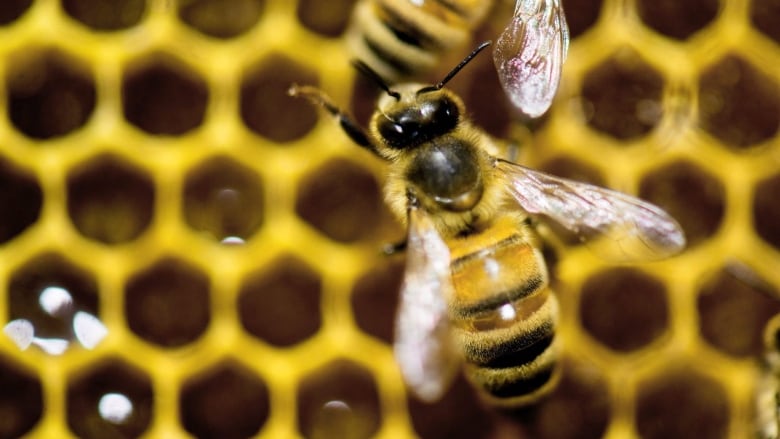Pesticide studies must look beyond bees and crops, expert says
Researchers need to look very broadly at how neonicotinoids can affect bees, expert says

Studies on how neonicotinoid pesticides can affect bees need to be more broad, looking at the entire environment the insects live in and not just crops they pollinate, a University of Guelph professor says.
Both Health Canada and the United States Environmental Protection Agency released reports Wednesday that said the pesticides were a potential threat to honeybees when they were found on certain crops.
- Neonics harmful to bees when used on some crops, but not others, EPA finds
- Neonicotinoid pesticide use to be reduced by 80% in Ontario
In the American study, neonicotinoids used on cotton and citrus seemed to harm honeybees, but not when used on other big crops such as corn, berries and tobacco.
The Canadian study said there was a heightened risk to honeybees when neonicotinoid imidacloprid a type of pesticide that mimics nicotine, which is naturally found on many plants was used for tomatoes and strawberries, but not with melon, pumpkin or blueberry plants or when used on corn and soybean seeds.
Seeds treated with pesticide
Crop seeds are treated with neonicotinoids before they are planted in the ground, said Nigel Raine, who is an expert on pollinator behaviour and is currently the Rebanks Family Chair in Pollinator Conservation at the University of Guelph.
"When the seeds are planted, this chemical is taken up by the plant as it germinates and grows and from a plant protection point of view, that's very good because it has the active ingredients that kill insect pests in the early growing stages of the plant. But the negative connotations potentially for pollinators are that you still find these residues in the nectar and the pollen that the bees and the other pollinators feed on when they visit these attractive crops," he told The Morning Edition on Thursday.
Important to look 'very broadly' at exposure
"It's very important that we look very broadly at this," he said.
The reports released Wednesday "seem to focus very much on exposure from the crops directly," but Raine said there have been reports and studies in the past five years that suggest residue from the pesticides have been found in wild flowers that are not near the crops.
- Neonicotinoid insecticides affect reproductive rates of queen bees, study says
- Bees may get hooked on neonicotinoid pesticides
"Bees may actually be foraging in a landscape where these pesticides are very widely available to them so they may be exposed to these pesticides in many different plants they visit for nectar and pollen, so their exposure might be for a much longer period of time over the season," he said. "Even if it is at a very low level, those kinds of chronic effects might be very important."
Those effects can include behavioural changes in the bees and how the bee colonies function.
Raine also noted both reports focus on honeybees "the bruisers of the bee world" which often fare better when exposed to pesticides compared to other native bees, including bumblebees.
"To use honeybees as a surrogate for all of this is perhaps misleading and suggesting that these are safer than they might be," he said.












_(720p).jpg)


 OFFICIAL HD MUSIC VIDEO.jpg)
.jpg)



























































































